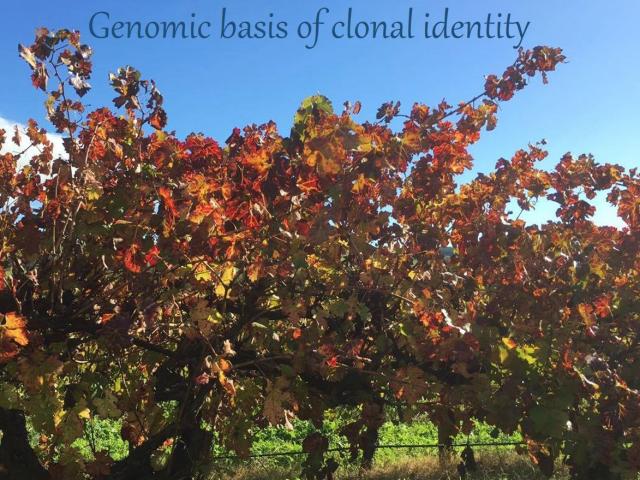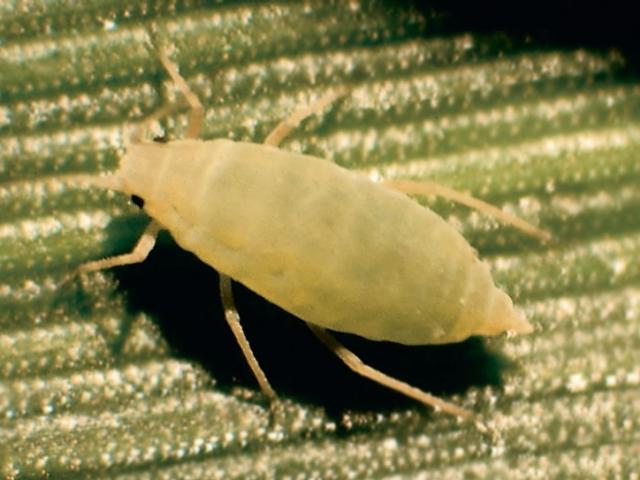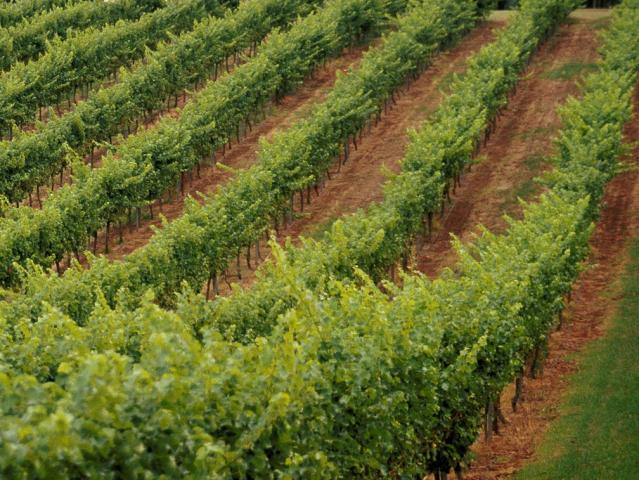VinSites: insights from grape to glass
In conjunction with Wines of Western Australia and coinciding with the introduction of an APC producers’ committee for winegrapes, DAFWA is partnering with Wine Australia, the grape and wine community’s national statutory services body, on a new national benchmarking system.
Western Australia has been chosen as the pilot state for VinSites, Wine Australia’s new insights system that will provide grape and wine producers with access to timely and accurate benchmark information, so that they can compare their vineyard’s and/or winery’s business performance with others.
Each vineyard in WA will be mapped in VinSites, a web-based tool, using satellite technology. Maps previously developed by DAFWA and that are freely available to producers, will be used to verify the satellite imagery. These maps can be downloaded from the department’s website. Vineyard owners can then claim their vineyard and enter their own specific varietal, harvest, rootstock, block and water information.
The vineyard information is also linked to production data, with winery intakes to provide winegrowers and winemakers with accurate and timely information about yields by variety and by region.
Is VinSites data collection mandatory?
Entering data into VinSites is not mandatory. Once vineyard owners claim their vineyard it will be matched with the known crush data information. It is then up to each individual how much extra information they wish to enter for their vineyard. The more information entered, the more accurate and valuable the reports and comparisons become.
Providing a service to levy payers
Currently, the wine sector has access to many disparate data repositories, all with slightly different content or out-of-date information.
VinSites will provide an accurate single source of truth for all wine producers to access. No more unreliable or unconfirmed data. The information entered will come straight from the user, in as much or as little detail as they choose. The user can choose who sees what: what the public see, what other growers see and what Wine Australia can see.
The information will give grape and wine producers an insight into their position in the sector but the value they get out of VinSites will only be as good as the details they enter.
When will VinSites be available?
The new tool will ‘go live’ in Western Australia and the Riverland in August 2016.
How much does it cost to use?
VinSites is a free tool provided by Wine Australia for grape and wine producers.
Is my personal information confidential?
Yes, user privacy and data security is a primary objective of the VinSites development and is assured.
Growers are encouraged to opt in to participate in the pilot. For more information, visit vinsites.wine.
To register, scan the QRcode:
Clones - what’s in a name?
Part 2.
In September last year we introduced some of the underlying causes of clonal variation. There has been some exciting progress in the world of viticulture, for example a group we are working with in the USA are readying to publish the first genome sequence of Cabernet Sauvignon. We’ll explain the implications to Australian and WA viticulture in a future issue.
Here we wanted to introduce Wisam Salo, a PhD student who has just commenced his project to interrogate the variation among the Houghton Cabernet Sauvignon clones. His main focus will be role of virus infection in the expression and stability of clonal identity.
Previous work conducted by DAFWA identified three of the advanced Houghton clones. When we commenced this research we were unsure if we would be able to access these vines, but recently the team at Accolade have recovered one of the foundation blocks in Gingin.
Virus expression played a big part in identifying the clones within the vineyard. Wisam’s research will have three primary aims:
- identify genetic fingerprints of all of the Houghton clones in that block.
- identify virus type and load in these clones.
- investigate the influence of viral load on fruit quality, at the gene and metabolite levels.
Wisam will be using whole genome sequencing technologies, from which markers will be designed to distinguish between clones. These fingerprints will be tested on vines from other vineyards, such as Margaret River, where we also have some confidence in the identity of a subset of clones.
Identification of viral type will be determined by RNA-sequencing (RNAseq), and viral load by quantitative PCR (qRT-PCR). Moreover, the impacts of viral load on fruit composition will be investigated, using analysis of metabolites in the must and RNAseq to investigate gene expression of known flavour precursors. This will be done in at least two years, with comparison to fruit of uninfected clones.
By the end of this project, the complete genome for Houghton clones will be sequenced, candidate markers will be established to assist in clone’s identification and selection, viral type and load will be determined by carrying out RNASeq analysis. In addition, the variation in gene expression due to the virus will simultaneously provide a complete picture for the expression of aroma precursor genes.
Acknowledging the kind support of Accolade Wines (Houghton), including Rhys Thomas and Brad Turner. This project will be carried out as a part of the ARC Linkage Project (LP130100347), which is partnered by WAVIA on behalf of several WA wine companies, DAFWA on behalf of the WA viticulture industry, Yalumba, AWRI and La Trobe University.
Cheers, Mick
University of Western Australia, and the Department of Agriculture and Food Western Australia
+61 (0)8 6488 1783
University of Western Australia
+61 (0)47 852 9065
Downy mildew study heads to USA
WA was one of the few remaining grape growing areas of the world to not have grape downy mildew until the 1998/99 season. Since its arrival it has now spread to all regions within the state and sporadically causes issues when weather conditions are right for it to rapidly multiply. Questions have long been raised as to where the disease came from and how it survives with WA’s hot summer periods and relatively dry grape growing environments.
Over the last two seasons DAFWA plant pathologist and PhD candidate Andrew Taylor has been collecting samples of grape downy mildew from across the state and Australia as part of his studies to try and answer some of these questions. Andrew is using molecular tools to take the DNA of the disease and compare it with populations found elsewhere. This will enable a direct comparison of populations found within a vineyard, between regions and even between countries.
Andrew is undertaking an expedition to America to collect DNA samples of the disease from its place of origin to determine how much alike or different they are to WA and Australian isolates.
Other work within his PhD study is to determine how the disease survives WA winters. Trials have been investigating whether the disease can remain viable over winter in canes, buds and leaves. This could impact early season management of the disease in WA. No definitive results of this work are available at this time.
Despite having a number of samples from the Swan Valley and Margaret River; if you are a grape grower in the Pemberton, Manjimup, Frankland and Great Southern regions and have an issue with downy mildew in the coming season please contact Andrew Taylor on +61 (0)8 9780 6241.
The more samples from these regions that are collected, the more robust the population analysis will be.
Insects and mites
Apple looper – update on investigation to assess pheromones
As mentioned in the December edition, the project to assess whether candidate pheromones can be used as an early warning for this pest has been completed. The results were somewhat disappointing being that none of the test blends of pheromones showed activity in attracting apple looper moths.
Since this time, we have learnt that researchers within the School of Chemistry and Biochemistry at the University of WA are involved in identifying insect pheromones. While they are working on pheromones produced by wasps involved in pollinating WA’s native orchids, the methodology they use is directly applicable to the quest regarding a pheromone for apple looper.
This coming season our plan is to collect sufficient numbers of apple looper larvae to obtain moths for the WA researchers. With their co-operation we hope they will be able to advise the likelihood of identifying a pheromone for apple looper.
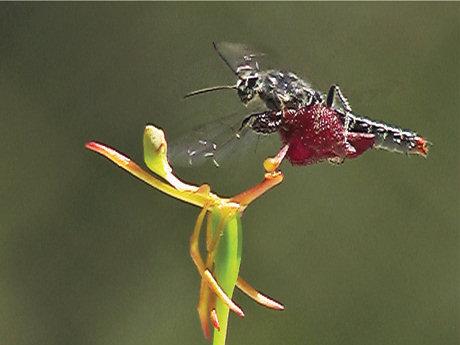
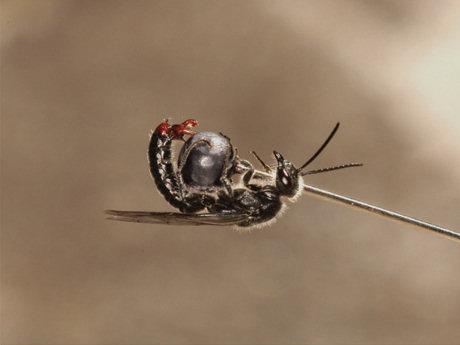
A verbal report was given at the Regional Program of Wine Australia in Margaret River and the Swan Valley in June and a final written report for this project will be soon available on the DAFWA website.
Garden weevil – a new demonstration project
Funding has been provided by Wine Australia’s Regional Program to conduct field demonstration studies on managing garden weevil in vineyards. The studies will take place next season and will include sites in the Frankland and Margaret River regions. The demonstration will be run as a collaboration exercise between industry and DAFWA.
The studies will be investigating the role of refined clay and dacron trunk bands. The clay aspect relates to results of the 2005 to 2009 garden weevil project. The reason for including trunk bands relates to the variability of their effectiveness in protecting vines from this pest.
Financial support is limited, but any vignerons willing to be involved and contribute some time in running a demonstration are encouraged to contact Stewart Learmonth for more information on +61 (8) 9777 0167.
Stewart Learmonth and Helen Collie, Manjimup Horticultural Research Institute.
Assist grain growers by checking for Russian wheat aphid
Growers may have read recent articles about the detection of Russian wheat aphid in South Australia and now Victoria. While this aphid is not a recognised pest of grape vines we do urge growers to be vigilant and support our grain farmers in looking for this pest in grasses that might be growing in your swards or areas surrounding your vineyards.
Russian wheat aphid is a major pest of wheat, barley and some grasses (Poaceae) which can cause significant yield losses.
Russian wheat aphid has not been detected in WA. As a precaution, it is very important that growers, agronomists and consultants remain vigilant by surveying for aphids and symptoms in cereal crops, grassy weeds and pastures.
For the latest information, please refer to weekly updates of the department’s PestFax newsletter or view the Russian wheat aphid page on the website agric.wa.gov.au
What to look for
Search weedy grasses for aphid pests.
Reporting absence of Russian wheat aphid is as important as reporting pests and symptoms.
Look for leaf curling, stunted plant growth and loss of vigour.
Start plant inspections at the edge of paddocks, where pests often colonise first.
Look for aphids near the base of newly emerged leaves and inspect the leaves and leaf whorls. Examine them closely using a hand lens or smartphone macro lens.
Russian wheat aphid looks similar to other cereal and grass aphids except it has two tiny tails at the rear end and lacks the usual excretion tubes or exhaust pipes on the top of the rear end of the body compared to other cereal aphids.
These pests are approximately 2mm long, pale yellowish green with a fine waxy coating.
Report any suspect aphids or damage as quickly as possible. If no aphids, report zero.
Reporting options
Report any suspect aphids or damage symptoms immediately.
Telephone DAFWA’s Pest and Disease Information Service on freecall 1800 084 881.
It is preferable to use reporting apps to make a report of absence or symptoms of aphids.
Download DAFWA’s MyPestGuide Reporter app to your smart phone, take a photo and follow the prompts on the device. When reporting absence write in the ‘I found textbox’ "no aphids or symptoms".
DAFWA apps can be used in areas that do not have mobile coverage, just refresh when returning to coverage.
People already using PestFax Reporter app can continue to do so.
If you do not have a smart phone you can create an online web report of absence or presence of aphids.
On-farm biosecurity is important
Russian wheat aphid is spread on plant material, machinery, equipment, clothes and on the wind so try to adhere to good paddock hygiene measures to ensure any risk of spreading the pest is minimised.
Do not drive vehicles, machinery or move livestock through crops unless necessary.
Limit the movement of people and equipment near the suspect crop.
Wash hands, and brush down clothes and boots that have been in contact with crops.
Do not openly move or transport affected plant material between properties, at this point, please do not send samples about for identification unless requested – advice will be provided on how to do this safely.
Go to the Farm Biosecurity website for more information on best practices.
For more information contact Dusty Severtson, development officer on +61 (0)8 9368 3249.
New wine committee established
The Agricultural Produce Commission is excited to announce the new APC Wine Producers’ Committee. The Wine Producers’ Committee was established in December 2015, with representation from all the wine regions of Western Australia.
With the relevant legislation now enacted the Committee will work with all Western Australian Wine Regional Associations and the State association to provide services on behalf of Western Australian Wine Producers’. The required funding of a fee for service will be collected from all wine producers annually after vintage, commencing from the 2016 vintage.
The wine industry requires a united, sustainable and influential voice and the creation of the APC Wine Committee, working with all State and Regional Wine Associations will secure a funding model to enable the Western Australian Wine Industry to prosper.
The APC already has 10 Producers’ Committees including vegetables, pome (apples and pears), Carnarvon bananas and strawberry. These APC Committees undertake various initiatives such as industry specific research, industry development, biosecurity, and promotion within industries, and funded by industries.
The APC Chairman, Dr William Ryan said that “The new wine committee structure will provide ongoing funding for both state wide matters and each of the regional wine associations. This is another example of the APC structure providing a good framework by which industries can fund their activities on a sustainable basis.”
The Wine Producers’ Committee represents all West Australian wine regions and with the security of funding will be able to instigate longer term programs to bring about positive change and growth for West Australian Wine Producers.
One already identified goal will be to increase recognition of Western Australian fine wine regions as some of the best, most distinctive, pure, and pristine in the world.
The Chairperson of the Committee; Mr Jeff Burch of Howard Park and MadFish Wines said “We have an exciting future with wine in Western Australia, where we have a wonderful product, produced in a clean green environment that is increasingly appreciated globally.
This development will enable the WA Wine Industry to work together to take that message to the global market place. Every bottle of WA Wine sold outside of WA is a post card from Western Australia.”
The Commission and the Committee will work closely with wine producers’ in this first year of operation to ensure a smooth implementation of the new Committee.
Anyone wanting to know more can contact the Committee chairperson, Jeff Burch on +61 (0) 418 384 558, or the Commission directly through Ingrid Smith, +61 (0)8 9368 3127, APCManager@agric.wa.gov.au.
DAFWA 2016 vintage summary
This year saw a continuation of the three trials undertaken last vintage.
The three trials consisted of:
- Assessing clonal variability in Chardonnay and Shiraz for future climate change
- Genomic basis of clonal variation in Cabernet sauvignon wine grapes
- Influence of crop load on Tempranillo wine quality
Other than logistical challenges of harvesting Chardonnay clones in Mount Barker and Shiraz clones in Margaret River on consecutive days, the vintage went smoothly for the DAFWA wine research team.
The number of batches and amount of fruit processed in 2016 is summarised in the following table.
| Region | Variety | Treatment | Total kilograms |
| Margaret River | Chardonnay | 5 clones | 500 |
| Margaret River | Shiraz | 4 clones | 400 |
| Great Southern | Chardonnay | 6 clones | 600 |
| Margaret River | Cabernet Sauvignon | 4 clones | 120 |
| Margaret River | Tempranillo | 3 crop loads | 45 |
|
| 1665 | ||
This vintage sees the completion of the winemaking component for the Chardonnay and Shiraz clones and Cabernet Sauvignon genomic variation trials. Wines produced from the 2016 vintage will be used for chemical and sensory analysis and also for industry workshops and tastings.
Innovation in the vineyard workshops
Over 60 grape growers, winemakers and other industry stakeholders came along to these workshop to listen to the presentations and take the opportunity to ask the presenters questions.
The workshops kicked off with a big breakfast followed by presentations from:
- Bruce Hamilton and Michael Rocca from Wine Australia who provided the details around vineyard data management in Australia and trialling the Bacchus vineyard data management project in Western Australia.
- David Kelly & Jim Campbell- Clause provided preliminary details on the “evaluating the effect different hang times have on Margaret River Cabernet grapes and wine” project. See Cabernet Hang-time forum under Future events.
- Stewart Learmonth from DAFWA provided information on the outcomes on the “trialling pheromones to manage Apple Looper” project and the DAFWA MyPestGuide app.
- Jim Campbell – Clause & Richard Fennessy provided a summary of the 2015-16 pruning, thinning and crop load trials to better manage Tempranillo in the vineyard and winery.
- David Botting from Howard Park Wines (HPW) provided a summary of the “managing extreme heat and wind events” project which trialled the use of spray on Kaolin clays and shade cloth to protect fruit on vines planted in North-South orientated rows. Fruit from these trials was further evaluated through small batch winemaking at HPW to determine the potential impact Kaolin and shade cloth may have on wine quality. Though the 2015 and 2016 growing seasons did not offer any extreme weather events, the data collected throughout the trial clearly demonstrated that the use of the Kaolin and shade cloth greatly diminished damage to the more exposed bunches on the western side of the vines. An information sheet is being developed and will soon be available on the WoWA website.
Future events
Winemakers’ Trial Forum
Each year winemakers regularly experiment with different techniques in the vineyard and winery. DAFWA is hosting an upcoming event where winemakers can taste other winemakers’ trial wines produced from various experiments focused on improving wine quality and production efficiencies. This event aims to further the collaborative nature of the WA wine industry by bringing winemakers together to share their practical experiences with a number of different viticultural and winemaking techniques.
When: 10.00 – 12.00pm Thursday 30 June 2016
Where: W1 Sensory Laboratory, Margaret River Education Campus, 272 Bussell Hwy, Margaret River
Cost: Free to WA winemakers
RSVP: All available spots at the tasting have been reserved.
Email richard.fennessy@agric.wa.gov.au for more information.
ACCC public forums in Western Australia - horticulture and viticulture
The purpose of the workshop is to enable the ACCC to speak with people in the horticulture and viticulture industries about the key competition and fair trading issues that affect them.
This is an important step in increasing the ACCC's understanding of the industries. The ACCC will also provide information to attendees about its functions, including the protections provided by the Competition and Consumer Act 2010.
Where: Bunbury Trotting Club Donaldson Park, Milligan Street, Bunbury
When: 11.30 - 3.00pm, Thursday 30 June 2016
Further information about the workshop is available on the Consultation Hub on the ACCC's website at www.accc.gov.au/consultations.
For those that cannot attend the workshops, complaints, information or questions can be sent to the ACCC at agricultureworkshops@accc.gov.au.
The 16th Australian Wine Industry Technical Conference & Trade Exhibition
The Australian Wine Industry Technical Conference and Trade Exhibition is the premier technical event for the Australian wine industry. Held every three years since 1970, it combines an extensive program of plenary sessions, workshops, posters, student forum and social events with the industry’s most respected and extensive trade exhibition.
When: 24 – 28 July 2016
Where: Adelaide
Registration costs and program details can be found on the events webpage.
Cabernet Hang-time Forum
For your calendar Wines of WA, the Wine Industry Technical committee, the AWRI, Curtin University, UWA and DAFWA will be hosting a Cabernet Hang-time forum for industry in Margaret River on 24 January 2017.
The forum will utilise outcomes from field trials, small batch winemaking and sensory evaluations by AWRI on Cabernet production in WA and current research on hang-time being conducted throughout other regions in Australia and overseas. Curtin University with the AWRI will conduct a tasting to illustrate the sensory differences associated with different hang-times.
Other presentations will highlight some of the international and Australian research in this area. These presentations include two speakers from the AWRI, Keren Bindon (Impact of hang time on phenolics), Simon Nordestgaard (fruit sorting) and a speaker from the University of Adelaide, Olaf Schelezki (optimisation of harvesting) and a potential guest speaker from California (TBC).
Research undertaken by DAFWA and Curtin will provide attendees with current data on yield and profitability parameters associated with different hang-times. The forum will conclude with a presentation on climate change modelling specific to the Margaret River region.
Further details will be provided closer to the date of the event.
If you have any specific questions for inclusion at the forum, please contact Larry Jorgensen (Wines of WA).


